“WHEN I GROW UP I WANT TO BE…”[editar]
Raising awareness on the importance of education and the need for all Roma children to complete their secondary education was the main objective of the campaign “When I grow up I Want To Be...”, which was launched by the FSG in the school year 2010-2011. It was the first campaign aimed at the Roma community itself, without forgetting the need to draw the attention of the rest of society and especially of public authorities on the need to work together to find solutions that effectively improve the opportunities of the Roma population.
The campaign pivoted on grassroots action that brought awareness-raising efforts to the neighbourhoods of 34 Spanish cities. A mobile photographic studio, the photo-van, traveled throughout Spain, transforming neighbourhoods into real photographic studios. The action consisted in asking children what they want to be when they grow up, and in offering them a photograph of themselves converted into the professional they dream of becoming. A photograph was taken of their faces and through a simple assemblage, the children were turned into teachers, pilots, hairdressers, firefighters, doctors, football players... The picture was then delivered to their parents, and could thus turn into an awareness-raising object that would sneak into their homes. The two following messages of the campaign could be read on the frame of the picture: "Whatever your dream may be, complete your secondary education” and “Roma with studies, Roma with a future”.
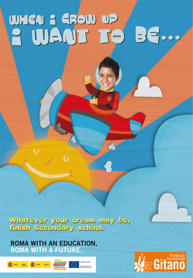
The campaign involved close to 3,000 families, and 2,800 pictures were taken of children. The campaign was supported by funds from the Spanish income tax programme “Other social purposes”. The awareness-raising action was made possible by the involvement of the staff of the FSG and the mobilisation of around 700 volunteers in all of Spain.
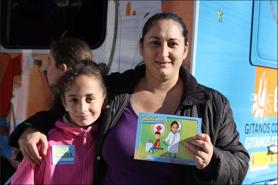
The mother of Eva shows the first photo taken in the context of the campaign
The campaign included various pieces of advertisement. One piece that stood out was the production of a twelve-minute video on the Roma community and education, in both English and Spanish, which allowed bringing attention to young Roma referents in the classroom, as well as drawing attention to the daily work performed by the Fundación Secretariado Gitano in the provision of educational support to Roma children through one of its most relevant educational programmes, the Promociona programme.
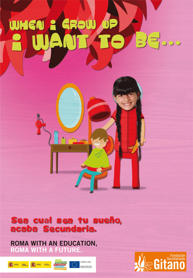
CONSIDERED AS A EUROPEAN GOOD PRACTICE
The campaign has received two mentions as an example of European "Best Practice". The first was in 2010, as an example of action to combat exclusion. This recognition brought the campaign to Brussels, where its initial results were presented at the Closing Conference of the European Year for Combating Poverty and Social Exclusion. The second mention was made in 2012 when the European Commission selected it as an example to combat discrimination and promote diversity in education. On this occasion, the campaign was presented in Brussels at the Seminar on Exchange of Best Practices, which involved members of the Group of Governmental Experts on Anti-discrimination.
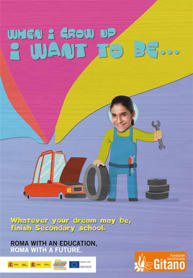
Stressing the responsibility of everyone
Improving the educational conditions of the Roma population is a task for everyone, not merely for the Roma community. This is the message that was conveyed in the public presentations of the campaign, which also informed on its objectives, displayed the pieces of advertisement and detailed the dynamics of awareness-raising actions. The presentations allowed the attention of governments and media to be drawn to the educational situation of Roma and showed examples illustrating the progress made to date. In 2010, the institutional presentation of the campaign was held in Madrid at a ceremony involving the then Ministers of Education, Ángel Gabilondo, and of Social Affairs, Trinidad Jiménez. This act was followed by 19 public presentations involving regional and local authorities, which counted on the participation of Education and Social Services councilors, mayors and government delegates, among others.
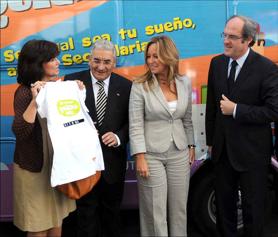
Former Ministers Ángel Gabilondo, Trinidad Jiménez and Carmen Calvo together with the President of the FSG, Pedro Puente, during the institutional presentation of the campaign
The campaign achieved a strong impact in the media, both over the course of the photo-van’s tour of Spain, and during public presentations. International media outlets – special mention should be made of the New York Times –, as well as local and regional media took advantage of the campaign to report on education and the Roma community. In 2010, the campaign directly reached an audience of 20,000.
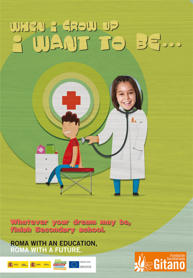
Campaign documents








